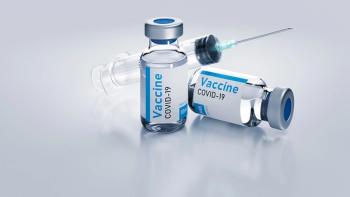
- BioPharm International-05-01-2011
- Volume 24
- Issue 5
Outsourcing Lean Quality Manufacturing
Rapid microbial screening provided by contract laboratories can save companies time and money.
By stripping waste and other non-value-added steps from the production process, lean manufacturing has saved companies billions of dollars. But why stop there? If a company is using traditional testing methods to release its products to market, the adoption of rapid microbial methods (RMMs) is one of the most important additions a company can make to its lean initiatives.
Tina Sturgill
THE VALUE OF RAPID METHODS
Lean quality is achieved by extending the principles of lean manufacturing to microbial testing. RMMs are being adopted by increasing numbers of pharmaceutical companies around the world to reduce lead times while ensuring product safety. Implementing rapid methods can unlock huge savings by shortening microbial hold times to just 24 hours for microbial limits, and cutting sterility testing time by more than 50%. This translates into an average 5–year net present value savings of $500,000 or more per facility.
Improved efficiency also reduces recovery time in the event of contamination. During production, when so much is at risk, the benefits of rapid methods are doubled. The faster that corrective action can be initiated, the faster recovery can occur, which reduces the potential impact on customer relationships and the bottom line.
PHOTO COURTESY OF THE AUTHOR
HOW RAPID METHODS WORK
Products that are susceptible to microbial contamination but expected to be shipped contamination free are screened before being released into distribution. That screening adds multiple days to the production cycle and extends lead times. Microscreening typically takes 3–7 days for microlimits testing and 14 days or more for sterility. That's a long time to wait when there is a good production process in place that is turning out products free from bioburden almost all the time. The wait time is frustrating, and expensive.
Well-validated, rapid methods are just as effective as traditional microbiological methods, only faster. Results can be delivered in as few as 24 hours using a rapid method featuring adenylate kinase (AK). AK-amplified bioluminescence combines the use of adenosine triphosphate (ATP), the gold standard of rapid detection methods, with a patented enzyme technology to deliver accurate results quickly.
All living organisms contain the compound ATP as a vital part of their energy metabolism. In the standard bioluminescence test, when ATP is detected, a reaction occurs that generates a photon of yellow-green light, similar to that of a firefly. It is a very sensitive technique, but limited by the fact that an organism contains only a small amount of the metabolite ATP.
Adenylate kinase (AK) is another vital part of energy metabolism. When supplied with an excess of ADP (adenosine diphosphate), AK acts as a catalyst, converting ADP into ATP. Because AK is an enzyme rather than a metabolite, it can be harnessed to generate almost unlimited amounts of its product. After 25 minutes, for example, the amount of ATP can be 1000 times greater than that which the organism originally contained. As a result of this amplification and the reduced dependence upon microbial growth for detection, AK-amplified bioluminescence provides faster results when screening for microbial contamination.
OUTSOURCING RAPID METHODS
A new alternative to bringing a rapid screening system in-house is to partner with a contract analytical lab that offers rapid detection as a service. With overnight shipping widely available, there's still much to be gained by being able to release products within two days.
Look for an accredited lab that is certified in current good manufacturing practices. Such labs will understand the demands of the regulated environment. Ask about their experience with validation services and, if there's a future possibility of bringing testing in-house, with method transfer. In addition to having a robust rapid screening system, the lab should be equipped to perform follow-up testing on any samples that test positive.
Some laboratoies are capable of mapping organisms at the genetic level. This strain typing process uses repetitive extragenic palindromic sequence polymerase chain reaction (rep-PCR) to identify and track organisms. Because it can be used to catalog any mutations or seasonal changes over time, strain typing can be a significant benefit to facilities plagued by a recurring bug.
ADOPTING RAPID METHODS IN PHARMA
As a growth-based method, AK-amplified bioluminescence has the advantage of being able to test products with a wide range of physical characteristics. This includes clear, opaque, highly pigmented, acidic, and viscous products, whether filterable or not. Both AK-amplified and traditional methods rely on batch or lot sampling, enrichment, and incubation. While the traditional method depends on laboratory technicians visually inspecting hundreds of samples one at a time over multiple days, the rapid method assays up to 120 samples in about one hour using a light-measuring instrument called a luminometer. Results are objectively recorded and presented in clear, color-coded tables and graphics, so no "judgment calls" are needed to interpret the results.
Transitioning pharmaceuticals and other regulated products to a rapid release method is straightforward and is, in fact, encouraged by many global regulatory bodies, including FDA. A contract laboratory with experience in this method should be able to assist its clients in validating their product or group of products for routine release using a rapid method. This typically entails side-by-side testing to ensure the rapid method is as sensitive as the traditional method. Once this comparability protocol is completed and the validation data is submitted, the RMM is effectively implemented.
A good RMM provider may have regulatory compliance expertise on staff, as well as drug master files (DMFs) accepted by FDA. DMFs include data for specificity, limit of detection, robustness, ruggedness, and equivalence, and can be used to supplement or streamline the validation of a company's rapid system. This may save significant time in both preparation of regulatory filings, and in FDA's review and approval process.
Tina Sturgill is senior director of biologcial sicences at Celsis Analytical Services, St. Louis, MO,
Articles in this issue
over 14 years ago
BioPharm International, May 2011 Issue (PDF)over 14 years ago
Quality by Design: The Case for Change (Part II)over 14 years ago
Perception and Realityover 14 years ago
Big Science Hits the Big Screenover 14 years ago
Filling the Pharma Pipelineover 14 years ago
Supply Chain PainNewsletter
Stay at the forefront of biopharmaceutical innovation—subscribe to BioPharm International for expert insights on drug development, manufacturing, compliance, and more.





